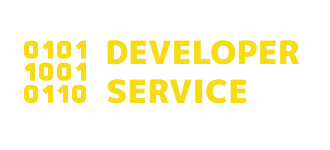Table of Contents
When working in software development, it's easy to get caught up in the hype surrounding the latest languages and frameworks. From Rust and Go to Next.js and Bun, the industry is constantly buzzing about what's new, what's fast, and what's trending.
In this environment, some developers might wonder: is Python still worth learning? And what about Django, the classic web framework from the mid-2000s—does it still have a place in modern development?
The answer, unequivocally, is yes.
My own work lies in the world of low-code, building enterprise solutions with OutSystems. But my true passion has always been high-code.
From the moment I wrote my first hello world in Pascal, built a tic-tac-toe game in Lisp, and managed library systems in COBOL, I’ve been captivated by the raw, expressive power of writing code by hand. Watching it come to life on the screen is a rare kind of reward—a meditative form of creation.
And when it comes to high-code, Python is my go-to.
So yes, I’ve ignored JavaScript for years. Not out of spite, but because Python gave me everything I wanted: elegance, power, and clarity.
Despite the rise of shinier tools, Python and Django remain deeply relevant in 2025—not just for legacy projects, but as serious contenders for building modern, secure, and scalable applications.
Let’s explore why.
The Staying Power of Python
Python’s syntax remains one of its strongest assets. It’s clean, readable, intuitive and designed to minimize the mental overhead of writing code.
Whether you're an experienced developer or a beginner just starting out, Python’s design philosophy prioritizes clarity. This makes onboarding faster and debugging easier—two qualities that matter a great deal on teams of any size.
As Guido van Rossum, Python's creator, once said: "Code is read much more often than it is written." Python's enduring popularity reflects this wisdom.
Versatility Across Domains
Python isn’t just a web development language, but it’s the Swiss Army knife of the programming world. It powers machine learning with libraries like TensorFlow and PyTorch, handles scripting and automation with ease, and dominates in the realms of data science and education. Python’s broad utility makes it an excellent investment for anyone looking to stay relevant in tech.
Massive Ecosystem and Community Support
With over 450,000 packages on PyPI, Python’s ecosystem is one of the richest in the programming world. Nearly every conceivable need, from web scraping, NLP, database access, testing to async networking, all has a library ready to go. Combine this with an enormous and friendly global community, and you've got a language that’s not only easy to learn but also easy to grow with.
Django: A Framework That Gets the Job Done
Django was built with pragmatism at its core. Its “batteries-included” approach means you get an admin panel, ORM, routing, forms, authentication, and security tools, that are all tightly integrated, without having to wire together a half-dozen packages just to get started.
This design allows teams to move quickly, build confidently, and maintain consistency. It’s a dream for startups and solo developers alike.
Maturity and Stability
Django isn’t a flash in the pan. First released in 2005, it's now a rock-solid, mature framework with an active development team and regular security updates. Some of the internet’s most robust services, that include Instagram, Disqus, and Mozilla, have relied on Django at various points in their evolution.
If you're building something that needs to last, Django is a reliable foundation.
Secure by Default
Security is baked into Django’s DNA. From automatic CSRF protection to robust user authentication and input validation, Django’s defaults are configured to help developers avoid common pitfalls. In an age of increasing cyber threats, this level of built-in protection is more valuable than ever.
Modern Django Is Not Your 2010 Django
Django has come a long way from its early synchronous roots. As of Django 3.1 and beyond, the framework supports asynchronous views and integrates with ASGI, allowing for performance gains in real-time applications, such as chat systems and streaming APIs. Django isn’t a blazing-fast microframework, but it doesn’t need to be, it’s now fast enough for the vast majority of web workloads.
Django + Modern Frontend Stack
In 2025, Django teams aren’t stuck with jQuery. The rise of tools like HTMX, Alpine.js, and Tailwind CSS has made it easy to build interactive, modern UIs without abandoning the backend-rendered model. Django pairs beautifully with these tools, offering a clean balance between frontend interactivity and server-rendered stability.
For API-driven applications, Django REST Framework (DRF) continues to be a gold standard. For faster, async-heavy APIs, Django can coexist alongside FastAPI or other Python microframeworks without friction.
Modern DevOps and Cloud Deployment
The Django ecosystem has embraced containerization and cloud-native workflows. With official Docker images, support for platforms like Fly.io and Railway, and straightforward integrations with GitHub Actions or GitLab CI, deploying a Django app today is far easier than it was even a few years ago.
Developer Experience and Productivity
Django’s tooling makes it incredibly fast to go from idea to MVP. You can spin up a fully functioning web app with user auth, an admin dashboard, and database interactions in a weekend. This makes it ideal not only for startups and hackathons, but also for internal tools and proof-of-concept applications.
Maintainer-Friendly Codebase
With its strong conventions and project structure, Django codebases are often easier to navigate and maintain than those built on loosely-coupled microframeworks. Onboarding a new developer is rarely a pain point. The documentation is still among the best in open source.
Where Python and Django Shine
Some specific domains where Python and Django continue to excel. I personally have built apps for these domains:
- Internal tools & dashboards — Quick setup, easy iteration.
- SaaS platforms — Multi-tenancy, user auth, admin interface.
- Content-heavy websites — Blogs, news sites, CMS platforms.
- Education & EdTech — Ideal for building learning platforms and courseware.
- AI-Integrated Apps — Great for combining with LLMs, data pipelines, or ML APIs.
Addressing the Criticisms
“It’s too slow.”
Speed concerns are valid in some contexts, but for most web apps, Python and Django are “fast enough.” Many performance issues are better solved through caching, async design, and horizontal scaling, not by switching to a faster language.
“There are newer frameworks.”
Sure, new frameworks are exciting. But new doesn’t always mean better. Many modern frameworks borrow ideas Django pioneered: conventions, strong defaults, and holistic design. And Django is still evolving to stay current with developer needs.
The Road Ahead
Python and Django show no signs of fading. Django’s roadmap includes continued async improvements, better support for typed Python, and performance boosts. Python itself is also maturing gracefully, with speedups from projects like Pyjion and ever-improving tooling.
The real strength of Python and Django lies not just in what they offer today, but in how well they’ve aged. They are not relics, they are workhorses. They are not trendy, they are trusted.
Final Toughts
In a world overflowing with frameworks and languages promising to be “the next big thing,” Python and Django continue to offer something rare: reliability, versatility, and joy of use. They empower developers to build fast, maintain clean code, and scale with confidence.
For me, that joy is personal. Even though I work in a low-code world, I find refuge in writing high-code. The meditative act of crafting a script, a model, or a view, line by line, is where I feel most at home.
And in that creative space, Python is where I always return.
So no, Python and Django aren’t going anywhere. And in 2025, they’re as relevant as ever.
My name is Nuno Bispo (a.k.a. Developer Service), and I love to teach and share my knowledge.
This blog is mostly focused on Python, Django and AI, but Javascript related content also appears from time to time.
Feel free to leave your comment and suggest new content ideas. I am always looking for new things to learn and share.
Follow me on Twitter: https://twitter.com/DevAsService
Follow me on Instagram: https://www.instagram.com/devasservice/
Follow me on TikTok: https://www.tiktok.com/@devasservice
Follow me on YouTube: https://www.youtube.com/@DevAsService

